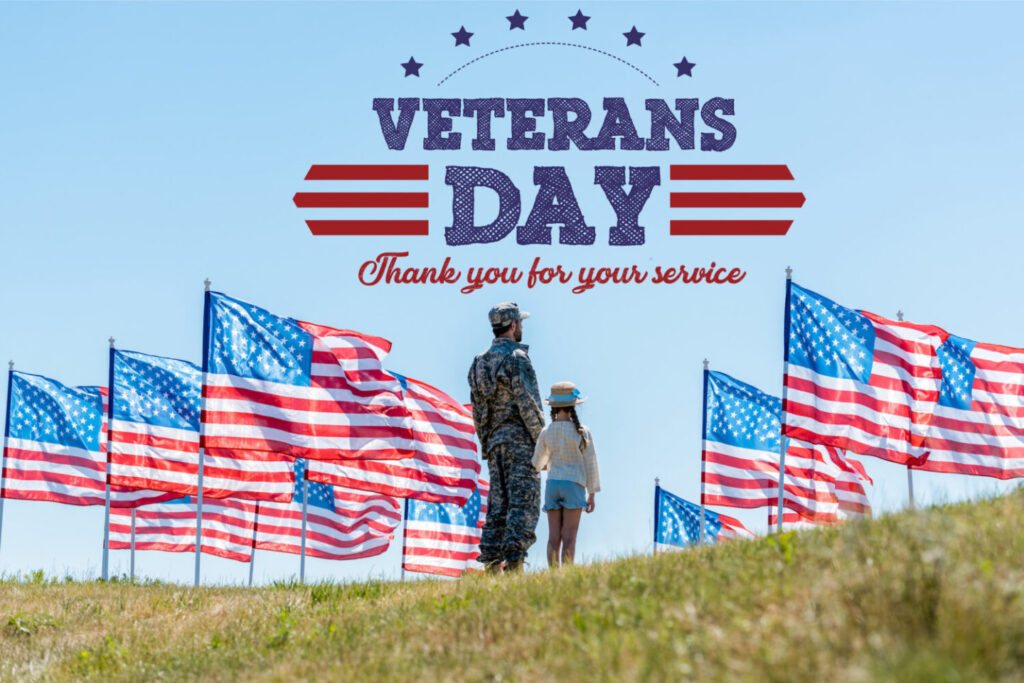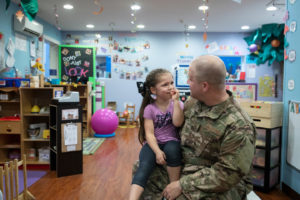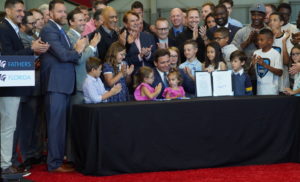Three ways to get your children involved on Veterans Day
For non-military families, Veterans Day may not hold much significance. However, it is a significant holiday for everyone in the United States. As the U.S. Department of Veterans Affairs explains,…

For non-military families, Veterans Day may not hold much significance. However, it is a significant holiday for everyone in the United States. As the U.S. Department of Veterans Affairs explains, the day’s purpose is “to honor America’s veterans for their patriotism, love of country, and willingness to serve and sacrifice for the common good.”
Three simple steps can help make Veterans Day come alive for your children:
1. Research the history of Veterans Day together.
Veterans Day began as Armistice Day, which was declared a legal holiday to honor World War I veterans. Soon after World War II, however, the original Act approved in 1938 was amended to include honoring all U.S. veterans of every war.
Veterans Day is typically observed on Nov. 11. In 1971, it was observed on Oct. 25 instead of the more usual Nov. 11. Such a public outcry ensued that in 1975, then-president Gerald Ford signed a law returning the observance of Veterans Day back to Nov. 11!
If you have a veteran in your family or circle of acquaintances, consider scheduling a time to interview them or do an oral history project. The American Veterans Center is a nonprofit dedicated to “preserve and promote the legacy and experiences of America’s veterans and active duty service personnel.” You can email them a story to be considered for publication on their online tribute to veterans.
2. Pray for and support the veterans suffering service-related disabilities.
The U.S. Census Bureau found in 2020 that post-9/11 veterans had the highest rate of service-connected disability when compared to any other group of veterans. (This remained true after accounting for differences in demographic and social characteristics.)
A number of these vets experience difficulties reintegrating into society after all the trauma they have faced. Fortunately, many creative initiatives have started (many by former veterans) that allow us to give back to them for all their sacrifices.
One example is Mighty Oaks, a faith-based service organization that helps combat veterans suffering from post-traumatic stress. Through peer-to-peer resiliency and recovery programs offered at no cost to participants, more than 4,000 alumni have successfully navigated the transition to civilian society. The organization’s Legacy recovery program has one of the highest success rates in preventing veteran suicide and divorce.
3. Thank veterans for their service.
One of the simplest ways to express our gratitude for someone is to say ‘thank you’. However, consider accompanying those words with a gift of your time or resources.
Beyond simply thanking veterans aloud for their service, Marine veteran Justin Constantine suggests more practical ways to show appreciation by donating frequent-flyer miles, volunteering, donating pro bono hours, or supporting a veteran-owned small business.
Many veterans also express a longing just to share perspectives about what service truly means for them, or tell stories about their life in the military.
By following these steps on Veterans Day (and throughout the year!), you can help your children gain a greater appreciation for all those who sacrifice so much on our nation’s behalf.



